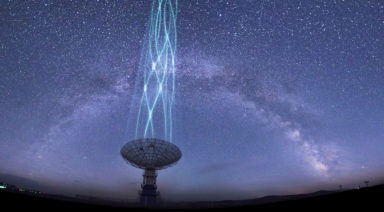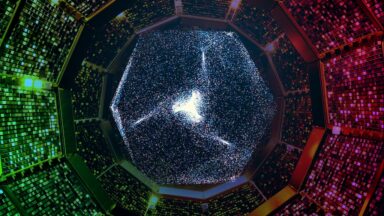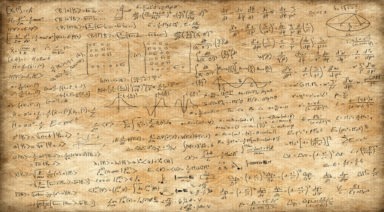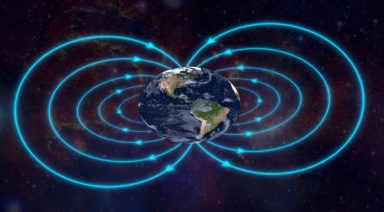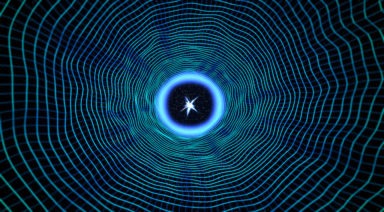Could New Unexplained Fast Radio Bursts Be Alien Signals?

A repeated galactic burst of energy coming from three billion light-years away has been detected again and astronomers don’t know what it is. First observed in 2007, this phenomenon called a fast radio burst (FRB) lasts only a fraction of a second but puts out massive amounts of energy, and some put out repeated signals.
Marc D’Antonio, astronomer and Gaia News contributor weighed in on this phenomenon.
“These fast radio bursts are what they sound like, radio bursts, that is down in the long-length end of the spectrum, they’re red in the spectrum— the light you can’t see. They happen in just a few milliseconds, but we usually see them from galaxies that are billions of light-years away, which implies they have a massive strength to get here with the kind of intensity that they do. So that was a mystery. Then we theorized about, or astrophysicists theorized about, stars like the pulsar, which is a neutron star but far more magnetic,” D’Antonio said.
“That means that if these stars have massive magnetic fields, then they have this rarified atmosphere that includes electricity and magnetic fields and then the surface of the star itself. And under certain conditions, those stars could emit basically like a shockwave pulse, a resonant pulse — that is like waves, you know you push waves in a pool and eventually one of them is going to get really big, well that really big wave is a resonant wave, it’s the one that they all add together. And sometimes that happens with these magnetars as they’re called, these gigantic, highly magnetized neutron stars that send out this very, very rapid pulse — POW!”
How does a star of that type recharge and fire again so quickly?
“Now, it would take some time for a neutron star of that type to recharge and be able to make another one of these bursts,” D’Antonio said. “But this particular one, just when you think you understand everything, this particular one shows us that we don’t quite understand everything because this particular magnetar — if it’s a magnetar at all — is firing bursts very quickly and rapidly, faster than theoretically possible. So now, we don’t know what’s going on here, now we don’t have an idea. What’s causing it to charge up again so quickly to be able to do this?”
“It’s like a flashbulb, you know like a flash on your camera. In the old days, when people had flashes, you would set off the flash and hear it charging up again. Then you could fire the flash maybe 10-15 seconds later. Well think about that in terms of a star, a magnetar sets out this burst that is massive, so massive that it would dwarf the output of our sun, and then it sends off another one right in short succession. Wait a minute, what is this? And that’s the mystery here, we don’t know. Isn’t that exciting? I think that’s really exciting.”
Is it possible that these FRBs that fire in rapid succession with more power than the sun are some type of signal from another life force?
“It would be arrogance to say that it’s definitely not a life form — that would be arrogance. But I do know that pulsars when we first saw them were thought to be intelligent signals as well and it turned out they were neutron stars that had that lighthouse beacon. Could FRBs be a natural phenomenon? Yeah, they could and maybe they are, the chances are that they are. But I can’t deny that these FRBs, act a certain way and then you find one that doesn’t. That’s pretty perplexing and that opens up the mind to thinking about possibilities of what could be causing that,” D’Antonio said.
This is a young field of study for astronomy, what is the big takeaway from what we’ve learned about FRBs so far?
“The takeaway here is that we don’t know. But you know what? That’s actually the fun part, it keeps you digging through the research, it keeps you looking at the data trying to figure out what it is we’re looking at here. But you know, then again the other side of this I’m thinking ‘I wonder if it is artificial? No, Mark, you can’t say that, you can’t say it’s artificial.’ What if it is artificial? I don’t know, I can’t say for sure. But we can’t deny the possibility that there might be other things at play here. But we always have to exhaust all natural phenomena possibilities first, but I like the possibility that’s out there, that might suggest a signal,” D’Antonio said.
Scientists to Broadcast New Message to ETs Across the Galaxy
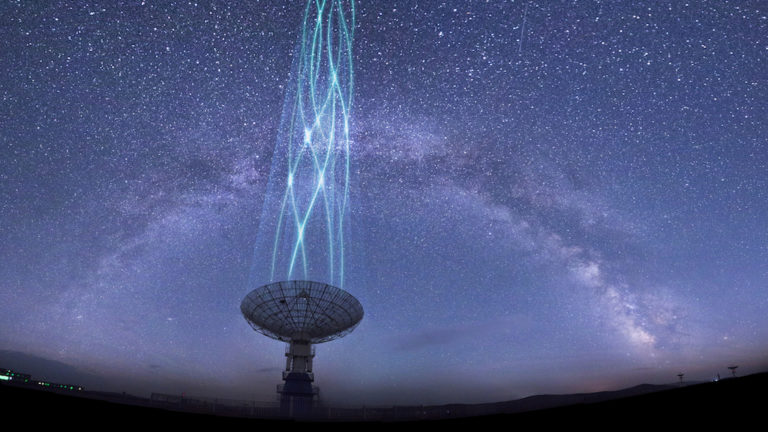
Scientists are planning a new message for any potential extraterrestrials in the universe, by sending a cosmic ‘hello’ to any intelligent life in space.
When we make contact with extraterrestrials, how will we communicate with them? What if we sent them a message showing information about Earth, humanity, and our technological capabilities?
That was the idea behind the Arecibo message in 1974, designed by Frank Drake and Carl Sagan. The now-famous message was the most powerful broadcast sent into space, from the, now defunct, Arecibo Radio Telescope in Puerto Rico. The binary message consisted of our solar system, strands of DNA, a human figure, and chemicals related to Earth, among other things.
Now, nearly 50 years later an international team of researchers introduced a new message intended for extraterrestrials. The team, led by Jonathan Jiang of NASA’s Jet Propulsion Laboratory, felt it was time to update the Arecibo message since we have come so far technologically since 1974.
The proposed message dubbed “the beacon in the galaxy” will include some similar information as Arecibo, including, “[B]asic mathematical and physical concepts to establish a universal means of communication followed by information on the biochemical composition of life on Earth, the Solar System’s time-stamped position in the Milky Way relative to known globular clusters, as well as digitized depictions of the Solar System, and Earth’s surface.


